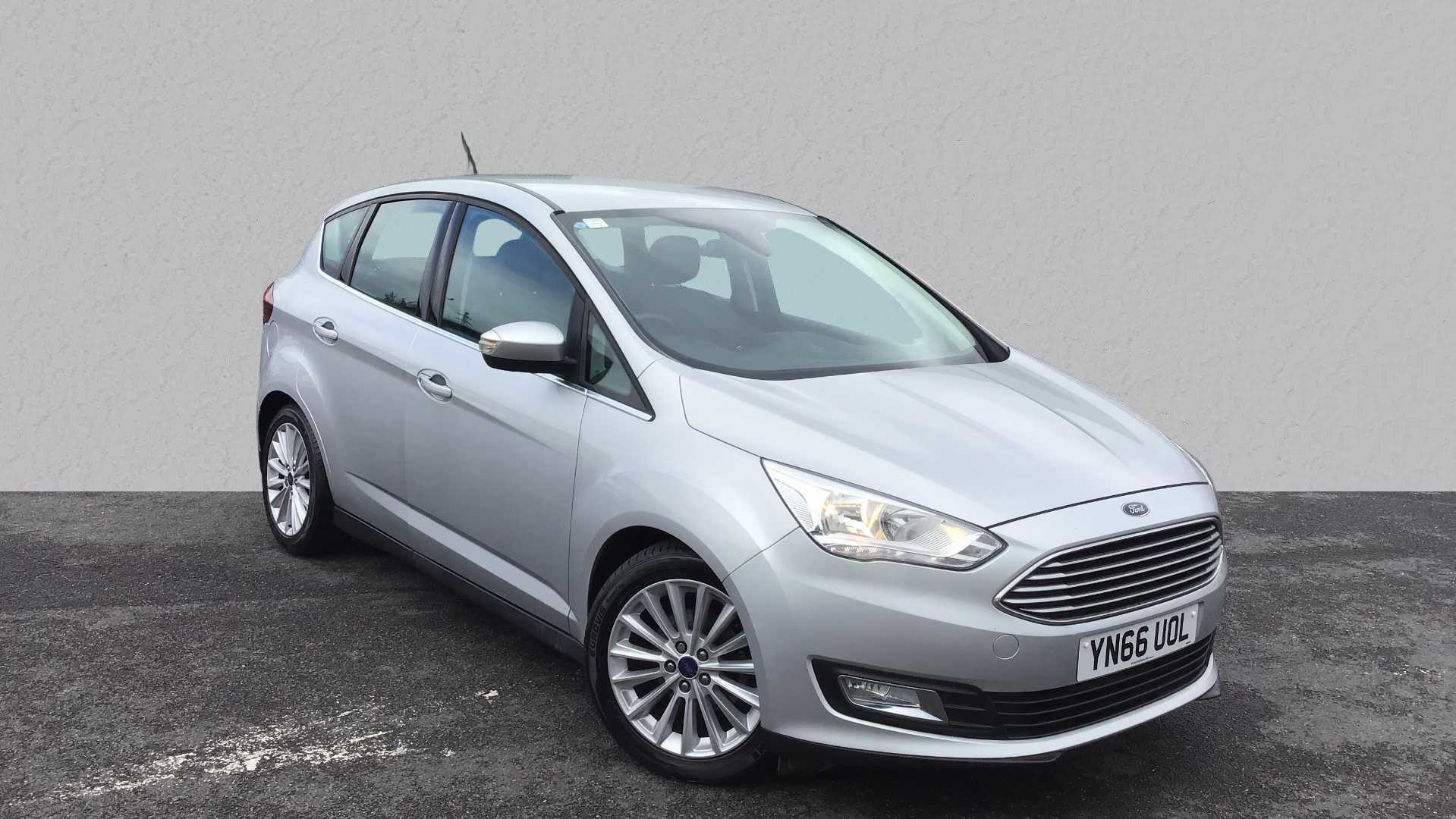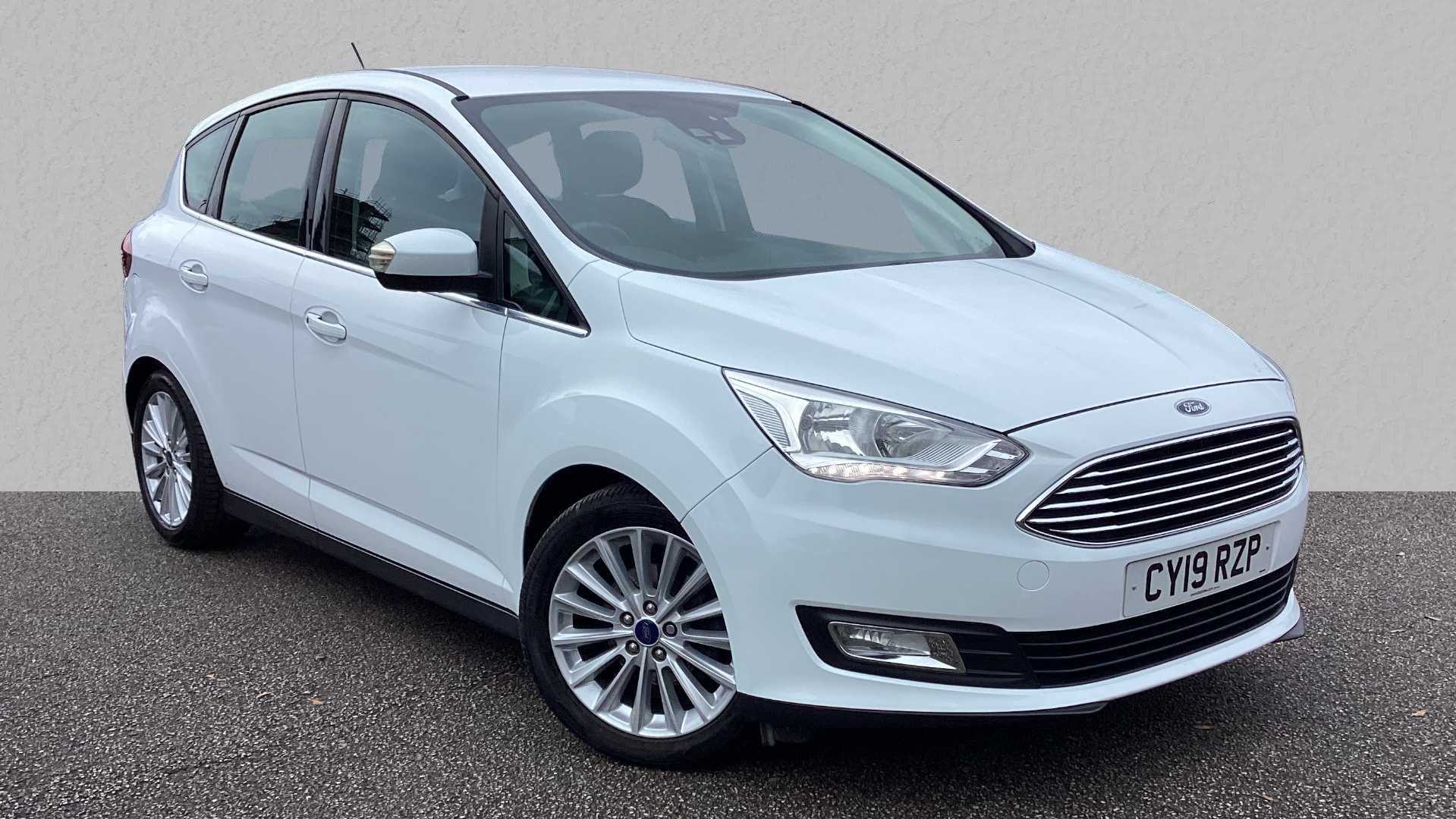Used Ford C-Max for sale: everything you need to know
The Ford C-Max may have gone off sale in 2019 but it remains an appealing option as a used family car. With keen engines and an agile chassis, it has many of the attributes of the Ford Focus it was based on, but offers buyers extra space, not just over the Focus but over more fashionable crossovers too.
Naturally, the C-Max doesn’t quite have the style of those crossovers, but it makes the goal of loading and unloading kids, pets, and shopping a lot easier, with flexible seating arrangements (such as three individual rear seats rather than a bench) and plenty of cubbies for stashing the paraphernalia of family life.
Alternatives to the C-Max include the Renault Scenic (also no longer available new), the BMW 2-series Active Tourer (which is still around), the Mercedes-Benz B-class (ditto), and the Volkswagen Golf SV (another car that has disappeared from the new price lists). And of course, plenty of crossovers - though only if you don’t mind a little more style than substance.
Should you buy a Ford C-Max?
Ford was late to the party when it launched the first C-Max in 2003. Renault had been selling its Megane Scenic since 1996, Citroen the Picasso since 1999, and Vauxhall launched the Zafira also in 1999. The format was simple: a car taking up no more space on the road than a regular family car (in each case, the Megane, Xsara, and Astra), but with a taller body providing more space, and more adaptable interior layouts with movable and removable seats.
Still, better late than never, and the original C-Max was a hit. The second generation arrived in 2010 and lasted until 2019, by which time the market had decided small MPVs were out, and crossovers were in. Today, the segment has almost disappeared, save for a few premium models, but the Ford C-Max is just as good as a used car, and even better value.
The car’s relatively narrow width ultimately hinders its ability to carry as much as larger MPVs - you can’t fit three child seats across in the back, for instance, despite having three individual seats instead of a bench. And in a footprint the same size as a Focus, there’s no third row of seats, either. But within those limitations, the Ford C-Max is a useful car, with seats that tumble forward or can (with a bit of effort) be removed entirely, plenty of interior cubbies, and great headroom with wide-opening doors, which means not having to stoop down so much if you’re securing kids in car seats, for instance.
And while the interior design looks a bit dated now, the fundamentals are pretty good. Ford got the driving position right, and the high-mounted gearshift puts it in a useful place rather than having to reach floorwards. Visibility is good too - you sit higher than you would in a Focus, if not at SUV height.
Ford tends to make cars that are good to drive and the C-Max is no exception. The suspension is up to the job of handling craggy city roads but doesn’t lose its composure at higher speeds, the steering is responsive, and there’s not too much body lean in corners. The engines all get you along quite nicely too, though the 1.5 Ecoboost is a bit thirsty.
Most manufacturers, like Ford, have abandoned this sector now. Curiously, two of the remaining vehicles are from premium brands, the BMW 2-Series Active Tourer and the Mercedes-Benz B-Class, and these make good used alternatives, though you’ll be looking at older or higher-mileage examples than the equivalent C-Max. French models like the Renault Scenic, Citroen C4 Picasso, and Peugeot 3008 are also worth a look - though the Ford remains one of the better small MPVs to drive.
A Ford C-Max not for you? We've got 1000s of used cars for sale to suit all budgets and needs
What’s the best used Ford C-Max model to buy?
If you’re using a Ford C-Max for regular, longer journeys, then the 1.5-litre Duratorq diesel keeps fuel costs down and has more than enough performance to handle a car full of kids and clobber. The more powerful of the two 1-litre Ecoboost engines is good in this respect too, and more refined, but will use a touch more fuel. The 1.5 Ecoboost probably isn’t worth it - the extra performance is nice, the extra fuel consumption less so.
In terms of specification, the entry-level Zetec packs plenty of kit, though does miss out on a touchscreen and the all-important Apple CarPlay and Android Auto integration, so for this reason, if you’re looking at a later C-Max, Titanium trim may be worth hunting down.
Used Ford C-Max fuel economy and performance
- Ford C-Max 1.0 Ecoboost 100PS: The 1.0-litre Ecoboost three-cylinder petrol is a familiar sight in smaller Fords, and makes 100PS in its lowest output in the C-Max. With a six-speed manual gearbox, Ford quoted a 0-62mph time of 12.9 seconds, and 42.2mpg combined.
- Ford C-Max 1.0 Ecoboost 125PS: The other 1.0-litre Ecoboost has 25PS more than the entry-level model, and cuts the 0-62mph time to 11 seconds flat. Combined economy is the same 42.2mpg.
- Ford C-Max 1.5 Ecoboost 150PS: Offered with an automatic gearbox only, the 1.5 Ecoboost with a 150PS output gets from 0-62mph in 10.2 seconds, with 33.6mpg combined fuel consumption.
- Ford C-Max 1.5 Duratorq TDCi 120PS: The 1.5-litre four-cylinder diesel was offered with either a six-speed manual or an automatic transmission. 0-62mph takes 11.3 and 12.4 seconds respectively, with economy of 48.7mpg and 46.3mpg for the manual and auto.
What used Ford C-Max trim levels are available?
By the time the Ford C-Max disappeared in 2019, Ford had slimmed down trim levels to just three grades, which you can read more about below. They should be familiar to most Ford buyers, with Zetec opening the range, and Titanium X topping it - the luxurious Vignale trim offered on some other Fords was not available on the C-Max.
- The Ford C-Max Zetec kicked off the range, with 16-inch alloy wheels, a radio with CD (remember those?), DAB, six speakers and USB connectivity, air conditioning, and a heated windscreen.
- The Ford C-Max Titanium gave you all the same kit as the Zetec, but added chrome trim to the front grille, automatic headlights with LED daytime running lights, an 8-inch infotainment touchscreen with Apple CarPlay and Android Auto, and keyless entry with a push-button start.
- The Ford C-Max Titanium X took a further step above the Titanium, and included bi-xenon adaptive headlights, electric adjustment for the driver’s seat, a panoramic roof, and part-leather seat upholstery.
Used Ford C-Max dimensions and boot size
The Ford C-Max’s dimensions are:
- Length: 4379mm
- Width: 1828mm (without mirrors), 2067mm (with mirrors)
- Height: 1610mm
- Ground clearance: N/A
The Ford C-Max’s boot size is:
- 432 litres
- 1684 litres with the rear seats folded down
Used Ford C-Max road tax
The Ford C-Max went off sale before Ford began introducing hybrid variants across its range, so there are no ‘alternative fuel’ models to hunt down for cheaper VED or ‘road tax’. As such, all C-Max registered since April 2017 will be subject to the same £180 per year tax bill, at least until the government bumps it up at some point. Prior to April 2017, you’ll pay VED based on the car’s CO2 emissions.
How much is it to insure a Ford C-Max?
No Ford C-Max should be too expensive to insure. With engines, transmissions and trim levels similar to that of the family-favourite Focus, the lowest models begin in group 10, with the highest (the old 2.0-litre diesels) sitting in group 22, with small variations between groups depending on trim level.
Read our full Ford C-Max review


